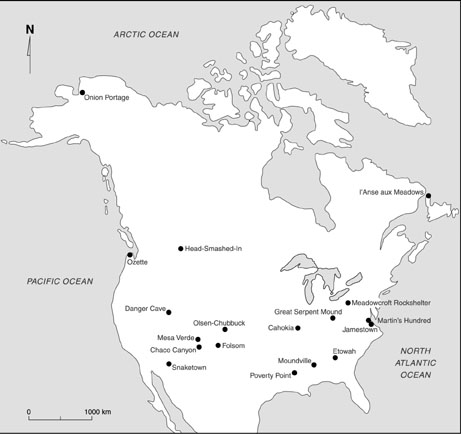

 | Page 1290 |  |
of postprocessualism—assuming that science is a system of understanding comparable to other cultural systems. This premise ignores the epistemological foundations of science, the very features that account for its success and the success of the cultural systems that adopt scientific knowledge as their own.
Whatever other consequences this may entail, it does mean that archaeology has developed along parochial lines (e.g., Fitting 1973). So U.S. archaeology has followed a rather independent course not only because of a different (or so it seemed) archaeological record but also because of contrasting social contexts.

Archaeological Sites in the United States
Another consequence of the nonscientific character of archaeology is the lack of the linearity one almost takes for granted in the sciences. Without the epistemological standards that have allowed science to make “progress,” archaeology has the embarrassing quality of repeating itself (e.g., Marcus 1983). Furthermore, not only does the historical strand double back on itself, it also periodically frays into multiple strands, or “approaches,” that do not succeed one another as less powerful theories give way to more powerful ones; instead, they vie for dominance in a more probabilistic fashion. Not all “kinds” of archaeology are whimsical in the broad sweep of history, however. From a current perspective a persistent partition within archaeology separates work driven by a desire to increase knowledge, of either the past or humanity